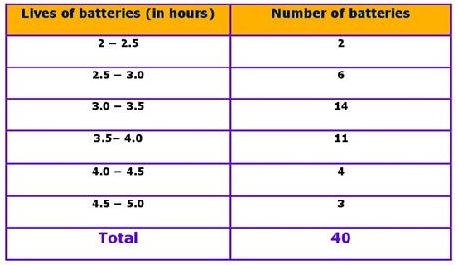Class 9 - Mathematics
Statistics - Exercise 14.2
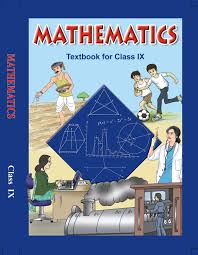
Top Block 1
Exercise 14.2
Question : 1: The blood group record of 30 pupil of standard 9th are recorded in a following data:
A, O, AB, B, O, O, O, A, B, B, O, A, O, A, O, AB, A, O, O, A, O, A, AB, B, O, A, A, B, O, B
Illustrate this report in a form of a frequency distribution table.
Give the rarest blood group of these pupils present in the classroom.
Answer :
The frequency refers to the number of students having same blood group. We will represent
the data in table:
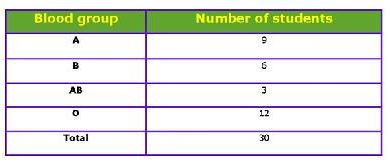
Most common Blood Group (Highest frequency): O
Rarest Blood Group (Lowest frequency): AB
Question : 2: The distance (in km) of 40 engineers from their residence to their place of work were found as follows:
5 3 10 20 25 11 13 7 12 31
19 10 12 17 18 11 32 17 16 2
7 9 7 8 3 5 12 15 18 3
12 14 2 9 6 15 15 7 6 12
Construct a grouped frequency distribution table with class size 5 for the data given above taking the first interval as 0-5 (5 not included).
What main features do you observe from this tabular representation?
Answer :
The given data is very large. So, we construct a group frequency of class size 5. Therefore, class
interval will be 0-5, 5-10, 10-15, 15-20 and so on. The data is represented in the table as:
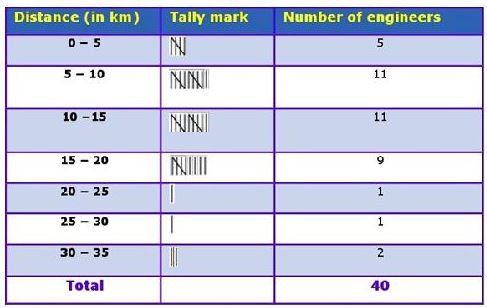
Mddle block 1
The classes in the table are not overlapping. Also, 36 out of 40 engineers have their house
below 20 km of distance.
Question : 3: The relative humidity (in %) of a certain city for a month of 30 days was as follows:
98.1 98.6 99.2 90.3 86.5 95.3 92.9 96.3 94.2 95.1
89.2 92.3 97.1 93.5 92.7 95.1 97.2 93.3 95.2 97.3
96.2 92.1 84.9 90.2 95.7 98.3 97.3 96.1 92.1 89
(i) Construct a grouped frequency distribution table with classes 84 – 86, 86 – 88, etc.
(ii) Which month or season do you think this data is about?
(iii) What is the range of this data?
Answer :
(i) A group of frequency distribution table of class size 2 has to be constructed. The class
intervals will be 84 – 86, 86 – 88 and 88 – 90 …..
By observing the data given above, the required table can be constructed as follows:
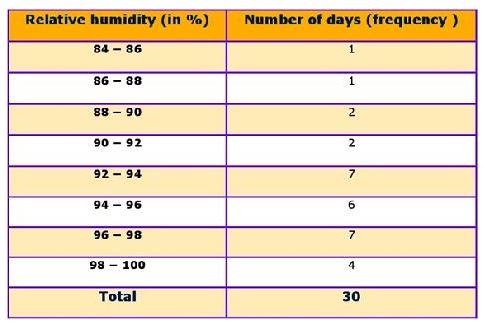
(ii) It can be observe that the relative humidity is high. Therefore, the data is about a month of
rainy season.
(iii) Range of data = Maximum value – Minimum value
= 99.2 – 84.9
= 14.3
Question 4: The heights of 50 students, measured to the nearest centimeters, have been found to be as follows:
161 150 154 165 168 161 154 162 150 151
162 164 171 165 158 154 156 172 160 170
153 159 161 170 162 165 166 168 165 164
154 152 153 156 158 162 160 161 173 166
161 159 162 167 168 159 158 153 154 159
(i) Represent the data given above by a grouped frequency distribution table, taking the class intervals as 160 – 165, 165 – 170, etc.
(ii) What can you conclude about their heights from the table?
Answer :
(i) A grouped frequency distribution table has to be constructed taking class intervals 160 –
165, 165 – 170, etc. By observing the data given above, the required table can be constructed
As follows:
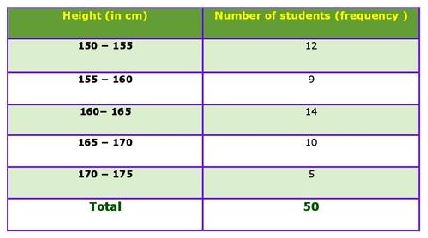
(ii) It can be concluded that more than 50% of the students are shorter than 165 cm.
Question : 5: A study was conducted to find out the concentration of sulphur dioxide in the air in parts per million(ppm) of a certain city. The data obtained for 30 days is as follows:
0.03 0.08 0.08 0.09 0.04 0.17
0.16 0.05 0.02 0.06 0.18 0.20
0.11 0.08 0.12 0.13 0.22 0.07
0.08 0.01 0.10 0.06 0.09 0.18
0.11 0.07 0.05 0.07 0.01 0.04
(i) Make a grouped frequency distribution table for this data with class intervals as 0.00 – 0.04, 0.04 – 0.08, and so on.
(ii) For how many days, was the concentration of sulphur dioxide more than 0.11 parts per million?
Answer :
(i) Taking class intervals as 0.00-0.04, 0.04-0.08 and so on, a grouped frequency table can be
Constructed as follows:
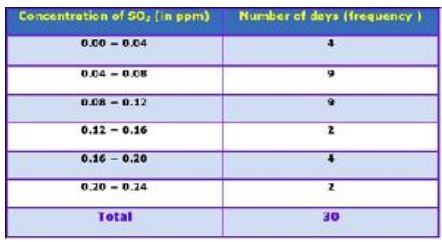
The number of days for which the concentration of SO2 is more than 0.11 is the number of
Days for which the concentration is in between 0.12 – 0.16, 0.16 – 0.20, 0.20 – 0.24
(ii) Required number of days = 2 + 4 + 2 = 8
Therefore, for 8 days, the concentration of SO2 is more than 0.11 ppm.
Question : 6: Three coins were tossed 30 times simultaneously. Each time the number of heads occurring was noted down as follows:
0 1 2 2 1 2 3 1 3 0
1 3 1 1 2 2 0 1 2 1
3 0 0 1 1 2 3 2 2 0
Prepare a frequency distribution table for the data given above.
Answer :
By observing the data given above, the required frequency distribution table can be constructed as follows:

Question : 7: The value of π upto 50 decimal places is given below:
3.14159265358979323846264338327950288419716939937510
(i) Make a frequency distribution of the digits from 0 to 9 after the decimal point.
(ii) What are the most and the least frequently occurring digits?
Answer :
(i) By observing the digit after decimal point, the required frequency distribution table can be
constructed as follows:
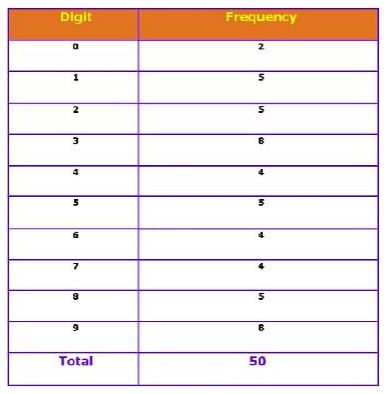
(ii) It can be observed from the above table that the least frequency is 2 of digit 0 and the maximum frequency is 8 of digit 3 and 9.
Therefore, the most frequently occurring digits are 3 and 9 and the least frequently occurring digit is 0.
Question : 8: Thirty children were asked about the number of hours they watched TV programmes in the previous week. The results were found as follows:
1 6 2 3 5 12 5 8 4 8
10 3 4 12 2 8 15 1 17 6
3 2 8 5 9 6 8 7 14 12
(i) Make a grouped frequency distribution table for this data, taking class width 5 and one of the class intervals as 5 – 10.
(ii) How many children watched television for 15 or more hours a week?
Answer :
(i) Our class interval will be 0 – 5, 5 – 10, 10 – 15, etc.
The grouped frequency distribution table can be constructed as follows:
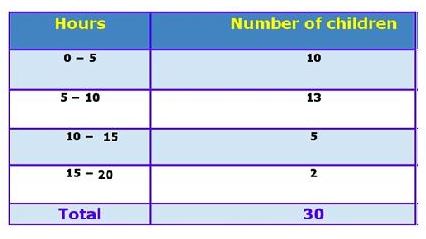
(ii) The number of children who watched TV for 15 or more hours a week is 2 (i.e. the number
of children in class interval 15 – 20)
Question : 9: A company manufactures car batteries of a particular type. The lives (in years) of 40 such batteries were recorded as follows:
2.6 3.0 3.7 3.2 2.2 4.1 3.5 4.5
3.5 2.3 3.2 3.4 3.8 3.2 4.6 3.7
2.5 4.4 3.4 3.3 2.9 3.0 4.3 2.8
3.5 3.2 3.9 3.2 3.2 3.1 3.7 3.4
4.6 3.8 3.2 2.6 3.5 4.2 2.9 3.6
Construct a grouped frequency distribution table for this data, using class intervals of size 0.5 starting from the interval 2 – 2.5.
Answer :
A grouped frequency table of class size 0.5 has to be constructed, starting from class interval
2 – 2.5. Therefore the class intervals will be 2 – 2.5, 2.5 – 3.0, 3.0 – 3.5, etc.
By observing the data given above, the required grouped frequency distribution table can be Constructed as follows:
